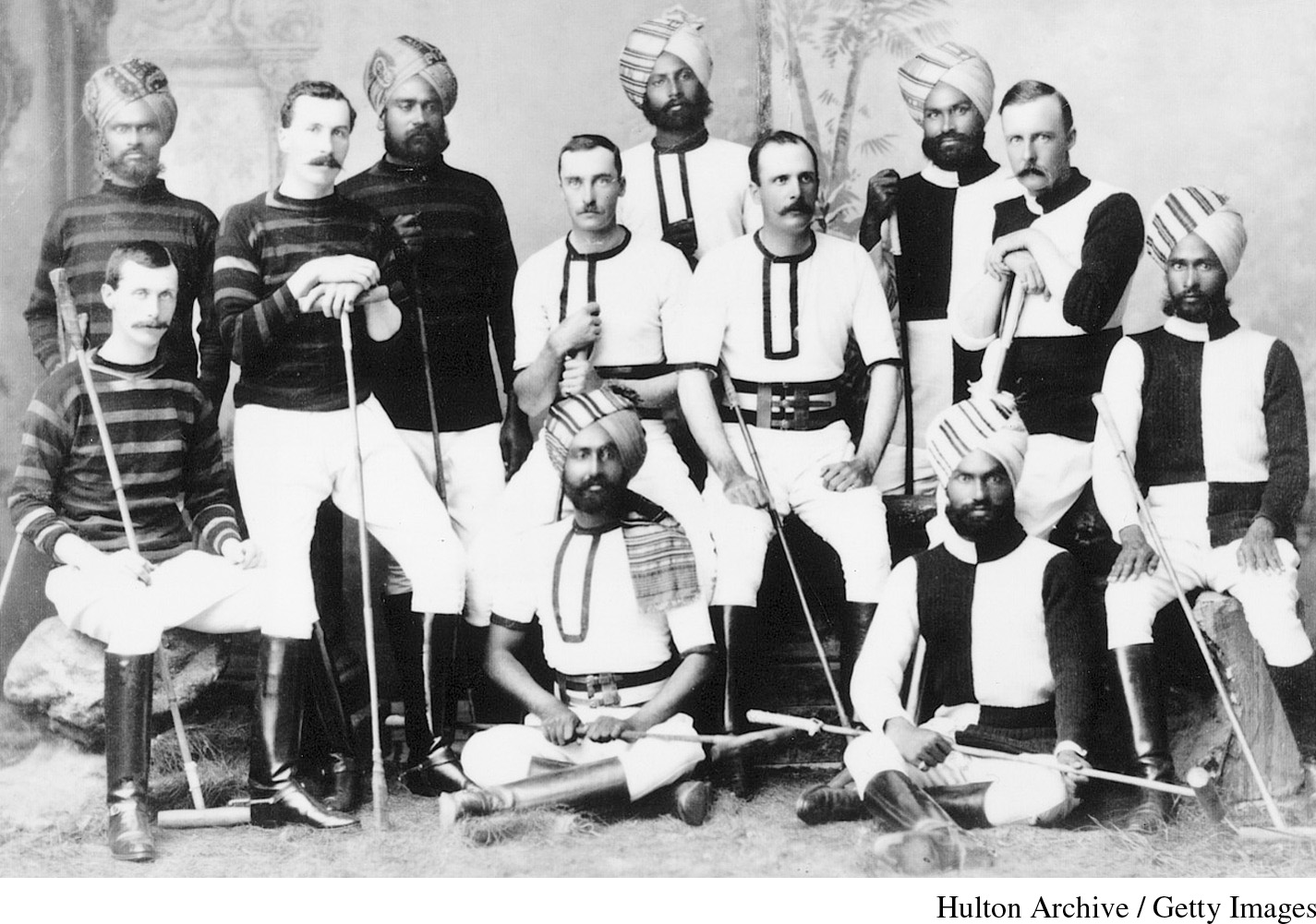Seeing History: Anglo-Indian Polo Team
Printed Page 781
Important Events
Team sports underwent rapid development during the imperial years as spectators rooted for the success of their football team in the same spirit they rooted for their armies abroad. Some educators believed that team sports molded the male character so that men could be more effective soldiers against peoples of other races. In the case of polo, as illustrated by the team photo here, the English learned from the Indians what would soon be seen as a typically English sport.
Polo is a sport derived from the South Asian practice of exercising horses, which were central both to the military conquerors of vast stretches of Asia and to the everyday lives of nomads in the region. Horses were also a major commodity along Asian trading routes. From Persia to China, depictions in art of the sport of polo have survived down through the centuries. The sport helped young people train for the rigors of an adulthood during which expertise in horsemanship was valued. Chinese statuary portrays women as champion polo players. As Europeans made contact with Asians after the fifteenth century and as the British settled in many parts of South Asia, European military men learned to play polo from local soldiers. Polo had long been called the “sport of kings,” and by the twentieth century polo became associated with the British aristocracy and far less with South Asians. Nonetheless the sport of polo spread to the Western Hemisphere as well and was also practiced by military men there. Above is a photograph of a nineteenth-century polo team in India.
Question to Consider
Describe empire as it is appears in this image, and compare it with other aspects of Indian life under British rule.